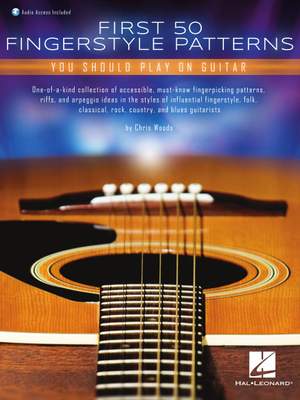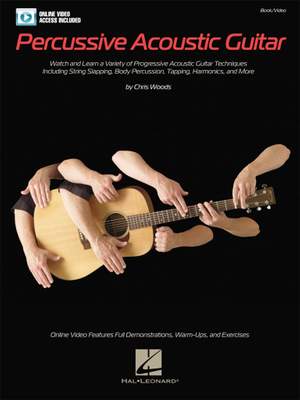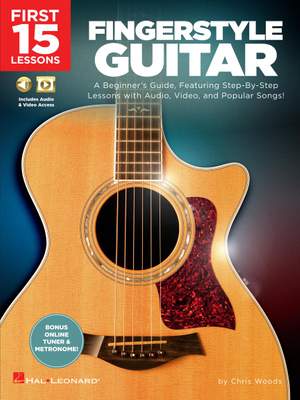Interview,
Chris Woods on Fingerstyle Guitar
With multiple albums and tours across the globe, Chris Woods has certainly mastered the art of fingerstyle guitar playing. Chris spoke to us recently about his latest publication First 50 Fingerstyle Patterns, fingerstyle and percussive acoustic guitar technique, his music education podcast, and more. Read the full interview below.
Can you tell me a little bit about your musical background, and your inspirations and influences?

You have an incredible performing and recording career, but what led to your venture into sheet music publishing?
Oh, that's very kind. Percussive Acoustic Guitar was the first book I published with Hal Leonard, and that came about because there wasn't a method or a publication on the subject. There was obviously a lot of material online, but there wasn't something put together in one place to learn from. Education has always been a big part of what I've done; I’ve always really enjoyed teaching. From there it grew basically, that’s where it started.
Tell me about your latest publication First 50 Fingerstyle Patterns. What is included in the book and what makes it a good choice for beginner guitarists looking to learn this technique?

I was very careful about the artists I chose because fingerstyle is more of a technique than a genre; it appears across the world in many different genres. The book is a wonderful insight into the technique without being specifically country, folk, or rock. It is an introduction that will lead people in many different directions which I think is really cool.
There is a style of fingerstyle playing called American primitive and I've included a pattern by one particular fore-father of that style called John Fahey. I've also included Ali Farka Touré's Malian fingerstyle playing which is just fantastic. Then there is Annie DeFranco's funky fingerstyle, alongside traditional guitarists like Chet Atkins and Leo Kottke, and contemporary players like Andy Mckee and Don Ross. There is a mix of virtuoso players and those who play more simplistically, who we might associate with less syncopated rhythms. The book has a plethora of different styles and artists that use this technique and I think that is why it is particularly unique.
How difficult is the technique to learn?
I think it is actually relatively easy to achieve if you approach it in a way you are not trying to learn something completely alien. It's a rhythmic thing in many respects. So it can be quite accessible and really just an extension of something like strumming.
I'm also very interested in hearing more about Percussive Acoustic Guitar. What extended techniques are covered in that book?

There is a lot of focus around string percussion as well. I think percussive acoustic guitar can almost seem like a genre in itself, but it is just technique. The book was designed to be something people could take a little bit from and fit into their playing.
You've collaborated with many artists in your career, but I am particularly interested in ‘Octet’, written by yourself and performed by eight Elixir string endorsees. Can you tell me how that came about and why those strings in particular?

I like writing pieces of music for people that I've never met and I also like the idea of working with lots of simple parts put together to make something cool. Elixir, they were game for that idea. It was a pandemic time project, so it was the ideal opportunity to work with people from different places. We choose a variety of artists for Octet; from super shredders to more delicate acoustic players. Putting them together was really, really cool.
With your podcast, The Music Education Podcast, you have spoken with many guests in the field of music education. What have you learnt through doing this?
We have released fifty-six episodes so far, and I have a fair few more recorded. That is a lot of different people to chat to! I have learnt a ridiculous amount really. I've learnt a lot about different perspectives on music education. I think when we start as music educators we think that there is one approach to teaching, or that we are all striving for this one perfect way to educate people. Talking to all these different people you realise that there is no perfect way and that there are actually many different routes. It is an amazing privilege, to be able to have an hour with some really interesting people.
A lot of topics within music education don't get discussed. There can be a lot of egos, and people can be scared to ask questions like: 'What does that mean?', 'Why are we doing that?' or 'I don't think we should do that'. The podcast is trying to challenge people's ideas of music education; it is trying to encourage different thinking and different conversations as well.




